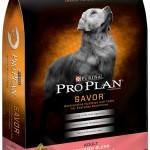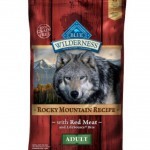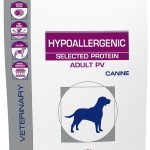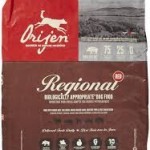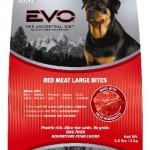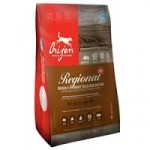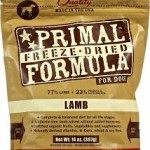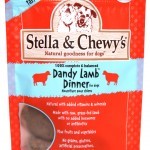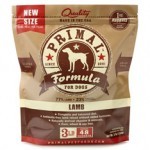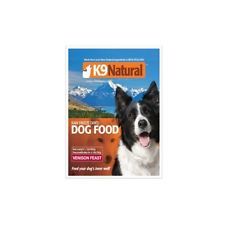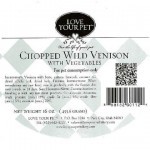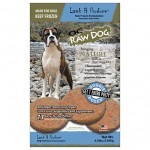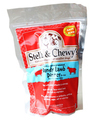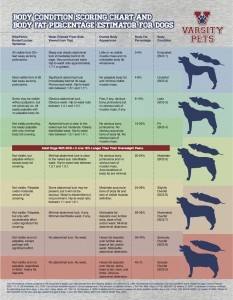Daniel Schulof's Blog, page 3
April 25, 2014
The Ultimate Guide to Choosing a Low-Cost, Low-Carb Dog Food
Prepare yourself, this is a 5,000-word piece.
In it I present the results of my careful analysis of more than a dozen different dog foods. Some of the things I discovered during this month-long process totally blew my mind. And I believe that they’re going to shock you too.
But it’s going to take you 15 minutes or so to digest it all. So close the door, find a quiet place, or print the article out and save it for Sunday morning coffee. But don’t abandon it just because it isn’t short. It’s long, but only because it’s thorough and accurate. Get through it and I think you’ll be thankful that you did (and, of course, so will your dog).
—
I’ve been banging the anti-carbohydrate drum a lot as of late. Not without good reason, of course: The evidence shows that excessive carbohydrate consumption is one of the primary causes of obesity. And it shows that canine obesity is the single most-common deadly canine nutritional disorder in the United States. It isn’t really hyperbole to say that carbs are killing our dogs.
Now, for those of you just tuning-in, here’s what we’ve already covered:
I’ve explained how starchy and sugary carbohydrates make dogs (and their humans) fat.
I’ve highlighted a promising new line of cancer research suggesting that very low-carbohydrate diets can be used to “starve” cancer cells of the metabolic fuel those cells need to grow and proliferate.
I had a great chat with Matt Koss, founder and CEO of Primal Pet Foods, a major producer of raw, low-carb dog food products.
And, less recently, I’ve written about why dogs have no nutritional need for carbs, why wolves don’t eat any carbs, and why, despite all this, Big Kibble continues to pack its food products with corn, wheat, rice, potatoes, and all kinds of other starchy carbohydrates.
Perhaps after reading all this you’ve considered switching your dog from a starchy kibble to a low-carb dog food. And, if you have, then you already know that one of the toughest things about low-carb dog foods is that they tend to cost somewhat more than kibble does.
But for most of us that’s about as far as the analysis goes. Because figuring out exactly how various products stack up against each other is hard — the bag sizes aren’t standardized, the serving sizes aren’t standardized, a cup of one kind of food might contain more than twice as many calories as a cup of another, there’s no meaningful calorie information on the bag to guide us, blah blah blah.
Here’s the bottom-line: Doing a true side-by-side comparison involves real, laborious calculator work.
So, in an effort to help you all understand how it will impact your budget if you switch your dog to a low-carb diet, I broke out my calculator. Over the past month or so I’ve been gathering nutritional and pricing data on an assortment of different low-carb dog food options. This post is a summary of my findings.
I focused my research exclusively on two factors — price and carbohydrate content. In other words, this is not a complete nutritional analysis of these various foods. That complex analysis would far exceed what this platform can accommodate.
What it is is a very thorough and accurate analysis of two very important issues. So, all else being equal, it will show you which low-carb products cost least (on a per-serving basis) and which products deliver the lowest per-serving carbohydrate content.
In the paragraphs that follow, I’ll show you exactly how much low-carb bang you get for your buck with many of the most popular low-carb dog food options on the market today. Want to know how to keep your dog lean without cutting calories or breaking the bank? Then this post is for you.
I want to be very clear and forthcoming about what this analysis shows, so six quick caveats before we get started:
(1) Let me repeat myself: this is not intended to be a complete and final analysis of what food is right for your dog. Deciding which food is right for your dog is not a simple process — beyond cost and total macronutrient content (how much carb, protein, and fat is in there), you’ve also got to consider stuff like your dog’s personal taste preferences, activity level, life stage, allergies, and other unique health problems, along with plenty of other things. You need more than this post to decide what’s best for your dog. Go talk to you vet before changing your dog’s food (in fact, I encourage you to print this article out and bring it to your vet for discussion).
(2) As we touched on during our interview with Matt from Primal Pet Foods, proponents of raw food diets often believe that there are nutritional benefits to raw foods that come specifically from their being raw. In other words, that the same set of ingredients is more nutritious in a raw form than in a cooked form. That may well be the case — I’m reserving the right to cast my personal judgment on that issue until I’ve done a more thorough review of the published literature on the subject — but it’s not built into this analysis. This here is all about carb content and price. For now, I’ll leave it to others to weigh-in on stuff like ingredient quality, manufacturer reputation, and the raw/cooked issue. (In fact, there seem to be plenty of folks out there in the internet-ether that are doing all that already.)
(3) For the sake of consistency and clarity, this analysis is based on a dog that needs to consume 500 calories/day to maintain energy equilibrium. I’ve used this assumption because it’s a round number and it allows us to compare products on a true per-serving basis, rather than a per-package basis. It’s not helpful to simply compare sticker prices because packages contain different amounts of food. Moreover, serving sizes also vary from product-to-product. Manufacturers A and B may both tell you that their bags contain 10 servings, but there’s nothing to guarantee that they’re basing their calculations off of the same serving-size assumptions. Accordingly, the only way to do a meaningful side-by-side comparison of products is to pick a fixed number of calories (here 500) and compare the products on that basis.
(4) Total carbohydrate content is, admittedly, not the single best metric for gauging how likely a food is to make your dog fat. As I explained recently, the literature shows that it’s a few specific kinds of carbs that are really doing the dirty work — the ones that cause blood sugar levels to rise most quickly (starches and sugars), to be exact. And useful measurements have been devised that show just how much fattening carbohydrate is in a food product (they’re called the “Glycemic Index” [hereafter GI] and “Glycemic Load”). Unfortunately, for dog food products, these values can’t be calculated without lab work. Total carbohydrate content, on the other hand, can be calculated using the information contained on a food label (so long as you know what you’re doing and you’re willing to actually do the work). So until Big Kibble decides to start publicizing the GI of its foods (don’t hold your breath), total carbohydrate content is about the best we can do on this front.
(5) All foods in my analysis are based around red-meat sources. Where possible, I picked premium/exotic meats like venison or lamb. But, where the manufacturer didn’t offer any exotic options, I just went with their red meat variety.
(6) My data comes from two places: products I bought myself from the wonderful folks at Paw Paws in Salt Lake City or from product information published by manufacturers themselves or by their popular online retailers (links provided for each food).
I think that’s it. Now, let’s get on with the show…
—
Group 1: The Standard Kibbles
Let’s start things off by looking at a few garden-variety, carbed-out Big Kibble options from a few different price points and let’s see where they come in, both in terms of price/serving and in terms of total carbohydrate content:
Purina Pro Plan Savor Adult Shredded Blend Lamb & Rice Formula
Supporting Information:
Max. Moisture: 12%
Minimum Crude Protein: 26%
Minimum Crude Fat: 16%
Minimum Crude Fiber: 3%
Approximate Non-Fiber Carbohydrate Content (Calculated): 43%
Primary Non-Animal Ingredients: Brewer’s Rice, Corn Gluten Meal, Whole Grain Wheat, Oat Meal, Soy Flakes, Barley, Dried Beet Pulp, Soybean Meal
Food/500 Calories: 132.45 g
Food/Bag: 8,181g
Cost/Bag: $26.99
Bottom-Line Information:
Cost/500-Calorie Serving: $0.44
Approximate Percentage of Total Calories From Non-Fibrous Carbohydrates (on Dry Matter Basis): 48.87%
Overall Comments:
Ah, good ol’ ProPlan.
Or, as the Purina website proudly proclaims, the “fuel” behind “eight straight Westminster Best in Show Winners.” (Just take a look at that appalling list of primary non-animal ingredients — no veggies, all starches — and try to wrap your head around how ALL of the last eight Westminster Best in Show winners are on that food. That’s mind-boggling. But I digress.)
It doesn’t get any more “garden variety Big Kibble” than this. So, in my mind, this is the perfect place to begin our analysis.
More specifically, at an approximate cost of $0.44/serving (again, assuming that our dog only needs 500 calories/day) and with approximately 48.87% of calories coming from non-fibrous carbs.
That’s a diet that’s approximately one-half carbohydrates, at a cost of around two quarters for every 500 calories worth of food.
Now, as we look at other foods, we can use the ProPlan data as something of a baseline.
Oh, but before we move on, here are a few common 500-calorie human foods, just so you can see how the amounts we budget to dog food compares to what we shell out every day for our own enjoyment:
McDonalds Quarter Pounder with Cheese [520 calories, $3.52/burger];
Chipotle salad with steak, romaine lettuce, cheese, black beans, salsa, and fajita vegetables [485 calories, $6.65/salad];
Applebee’s Roma Pepper Steak entree with sirloin steak, red potatoes, and Portobello mushroom cap stuffed with cheese [$12.49/meal];
7.5oz. filet mignon [510 calories, a lot of money].
So, calorie-for-calorie, switching all those Westminster champs from ProPlan over to an “all-Quarter Pounder” diet would increase the cost of feeding them by about 700%. In other words, this ProPlan stuff is cheap.
Blue Buffalo BLUE Wilderness Rocky Mountain Recipe with Red Meat
Supporting Information:
Max. Moisture: 10%
Minimum Crude Protein: 30%
Minimum Crude Fat: 15%
Minimum Crude Fiber: 6.5%
Approximate Non-Fiber Carbohydrate Content (Calculated): 38.5%
Primary Non-Animal Ingredients: Tapioca Starch, Peas, Tomato Pomace, Potatoes, Flaxseed, Alfalfa Meal, Potato Starch, Carrots, Sweet Potatoes, Blueberries, Cranberries, Apples, Blackberries.
Food/500 Calories: 136.15 g
Food/Bag: 10,000 g
Price/Bag: $57.99
Bottom Line Information:
Price/500 Calorie Serving: $0.79
Approximate Percentage of Total Calories From Non-Fibrous Carbohydrates (on Dry Matter Basis): 42.78%
Overall Comments:
With marketing materials that cry-out “down with those big dog food companies!” and “feed your dog like a wolf!” Blue Buffalo is doing a nice job of echoing some of VP’s rallying cries.
The only problem is they’re completely full of it:
For one, the Blue Buffalo Company is a private equity-owned, $2 billion business with plans of going public this year. Blue Buffalo isn’t anti-Big Kibble, Blue Buffalo is Big Kibble. Don’t let the “aw, shucks” tone of their nationally-televised commercials fool you.
And as far as the whole “like a wolf” thing goes, I don’t need to remind you that wolves don’t eat things like tapioca starch, potatoes, and alfalfa meal (aka “hay”) — the primary non-animal ingredients in this product.
But here’s the bottom-line:
The per-serving cost of this product is about 80% more than our ProPlan baseline. And the carbohydrate content is only marginally lower. So if your goal is to cut your dog’s total carb intake without breaking the bank, switching from ProPlan to Blue Buffalo ain’t exactly the way to do it.
Sorry, lovers of Blue River — I mean Blue Buffalo — foods, don’t shoot the messenger.
Royal Canin Veterinary Diet Canine Hypo Selected Protein Potato & Venison
Supporting Information (all from here):
Max. Moisture: 10%
Minimum Crude Protein: 19.5%
Minimum Crude Fat: 10.0%
Minimum Crude Fiber: 3.8%
Approximate Non-Fiber Carbohydrate Content (Calculated): 56.7%
Primary Non-Animal Ingredients: Dried potato, potato protein, coconut oil, natural flavors, vegetable oil, fish oil, salt.
Food/500 Calories: 142.27 g
Food/Bag: 11,339.80 g
Price/Bag: $92.49
Bottom Line Information:
Price/500 Calorie Serving: $1.16
Approximate Percentage of Total Calories From Non-Fibrous Carbohydrates (on Dry Matter Basis): 63.00%
Overall Comments:
First thing’s first: This is a prescription-only food and I am definitely not commenting on whether it’s a sound nutritional treatment for any disease. I’m just crunching the hard numbers presented on the label and telling you what they say (more specifically, what they don’t explicitly say) about it’s price and carb content.
Moreover, it probably goes without saying, but surely the high price point here reflects, at least in part, its value as a form of supposed disease-treatment, something that the other products in this analysis do not claim to be.
That being said, you can see that the price-per-serving is nearly three times as high as ProPlan and that the total carbohydrate content is a whopping 63% (the highest per-serving carb content in our entire analysis). Those are some big numbers.
And I’m not sure exactly what my legal obligations are when it comes to prescribed medical interventions. So I think we should just move on.
—
So that’s it when it comes to “standard” kibbles. Obviously there are plenty of other products out there but I’m just one man and you’ve all got a limited attentional bandwidth anyways. So hopefully that gave you a meaningful sense of what to expect from that category of products.
To summarize, with a standard kibble you’re going to pay about $0.50-$1.00 for every 500 calories of food. And in return you’ll get a product that is somewhere around 50% carbohydrate.
Group 2: The “Low-Carb” Kibbles
Now let’s go to our second category, the “low-carb” kibbles. These are kibble-ized food products that have cultivated a reputation for being relatively low-carbohydrate. Who lives up to their reputation and who falls short? Let’s take a look:
Orijen Regional Red (Kibble-Style)
Supporting Information:
Max. Moisture: 10%
Minimum Crude Protein: 38%
Minimum Crude Fat: 18%
Minimum Crude Fiber: 5%
Approximate Non-Fiber Carbohydrate Content (Calculated): 29%
Primary Non-Animal Ingredients: Red Lentils, Chickpeas, Green Peas, Yellow Peas, Green Lentils, Pea Fibre, Yams, Alfalfa, Butternut Squash, Spinach Greens, Carrots, Apples, Pears, Cranberries, Blueberries, Kelp, Licorice Root
Food/500 Calories: 129.03 g
Food/Bag: 13,000 g
Cost/Bag: $92.99
Bottom-Line Information:
Cost/500 Calories: $0.92
Approximate Percentage of Total Calories From Non-Fibrous Carbohydrates (on Dry Matter Basis): 32.22%
Overall Comments:
Okay, two key things to note here:
1) You can see that the price per serving is pretty similar to the Blue Buffalo product but that the total carbohydrate content is significantly lower (32% vs 42%, or about 25% less). There’s only about half as much carbohydrate in here as there is in the Royal Canin product.
2) The primary non-animal ingredients here (notably, lentils and chickpeas) score very low on the GI scale, and that’s a good thing. There are several popular online databases (here’s a link to one from the University of Sidney) that can tell you the GIs for lots of popular whole food products if you’d like to see for yourself. But, to give you an example, the GI for red lentils (the top non-animal ingredient here) is 21 — a very low score for a carby ingredient. The GIs for tapioca-based products (such as “tapioca starch,” the primary non-animal ingredient in the Blue Buffalo product) are in the 70s, 80s, and 90s. These are very high scores — pure glucose, for example, scores 100.
Evo Red Meat Formula Large-Bite Dog Food
Supporting Information:
Max. Moisture: 10.0%
Minimum Crude Protein: 42%
Minimum Crude Fat: 22%
Minimum Crude Fiber: 2.5%
Approximate Non-Fiber Carbohydrate Content (Calculated): 23.5%
Primary Non-Animal Ingredients: Tapioca Starch, Peas, Sunflower Oil, Natural Flavors, Menhaden Oil, Apples, Carrots, Potassium Chloride, Pumpkin, Tomatoes
Food/500 Calories: 120.12 g
Food/Bag: 6000 g
Cost/Bag: $32.29
Bottom-Line Information:
Cost/500 Calories: $0.65
Approximate Percentage of Total Calories From Non-Fibrous Carbohydrates (on Dry Matter Basis): 26.11%
Overall Comments:
First off, props to Evo for the studly Rottie on the bag. That’s one handsome animal.
High-GI tapioca starch again makes an appearance at the top of the non-animal ingredient list. And that should ring some alarm bells. If there’s far more tapioca than, say, peas in here (and the only information we know from the nutrition label is that there is more tapioca than peas, not how much more), then the GI for the product as a whole is still going to be very high.
However, you can see that the total carbohydrate content is quite low. Lower than any of the other kibble products we’ve looked at and approaching half of what we found in ProPlan and Blue Buffalo.
And the price point is also quite low. Considerably lower than either Orijen or Blue Buffalo.
Be wary of the tapioca for the reason noted above, but if your goal is simply to pick a kibble product that delivers low carb content on a reasonable budget, then this product is probably the best in our analysis.
—
So that’s it for the “low-carb” kibbles. Alas, because the extrusion process (the primary way that kibble is manufactured) requires the use of carby ingredients as binders, there just aren’t that many low-carb kibbles on the market.
But you can see that the the low-carb reputations of these two products are moderately well-deserved, at least in the sense that they are somewhat lower in total carbohydrate content than the standard kibbles in our analysis. And that, at least in the case of Orijen, the carby ingredients are also low-GI ones.
The prices are somewhat higher, as you would probably expect. I found no true “entry-level” product that delivers a low-carb kibble without a premium price point.
But, taken as a whole, the differences are pretty modest, reflecting the plain realities of the extrusion process. Neither of these products is what I’d call “very low-carb” or even remotely close in macronutrient balance to what a wild wolf would consume.
In contrast, when we make the jump to our next category of products — the freeze-dried raw foods — you’ll start to see some really eye-opening differences.
—
Group 3: Freeze-Dried Raw Foods
Unlike kibble-ized products, which are produced through the extrusion process, freeze-dried foods can be produced without using starchy carbohydrates as binders. And so they generally wind up as much lower in total carbohydrate content. How low? Let’s take a look:
Orijen Regional Red (Freeze-Dried)
Supporting Information:
Max. Moisture: 4%
Minimum Crude Protein: 36%
Minimum Crude Fat: 35%
Minimum Crude Fiber: 5%
Approximate Non-Fiber Carbohydrate Content (Calculated): 20%
Primary Non-Animal Ingredients: Spinach Greens, Pea Fiber, Sunflower Seeds, Pumpkin, Butternut Squash, Carrots, Cranberries, Blackberries, Blueberries, Apples, Pears, Plums, Apricots, Kelp.
Food/500 Calories: 101.32 g
Food/Bag: 454 g
Cost/Bag: $32.99
Bottom-Line Information:
Cost/500 Calories: $7.36
Approximate Percentage of Total Calories From Non-Fibrous Carbohydrates (on Dry Matter Basis): 20.83%
Overall Comments:
Okay, let’s start with the good:
Total carbohydrate content is getting close to the 20% mark. Still way more calories from carbs than any wild wolf has ever eaten, but considerably better than anything from either of the kibble categories.
It’s also great that the primary non-animal ingredient is spinach greens. Obviously that’s a nutrient-dense, ultra-low-GI food. In terms of micronutrient density and overall impact on blood sugar levels, it is worlds away from something like “tapioca starch.”
In other words, if you accept the evidence that low-carb diets prevent obesity in dogs then there can be little doubt that this is a pretty good product, nutritionally-speaking.
But now the bad:
On a per-serving basis, this food costs about seventeen times as much as ProPlan. And more than seven times as much as Orijen’s kibble-ized version of their “Regional Red” formula.
Those are not misprints. You’re talking about a month’s worth of ProPlan every two days. The jump from ProPlan to here is roughly analagous to the price difference between a fast-food hamburger and a dry-aged, USDA Prime ribeye at Peter Luger.
In the end, I can only come up with one way to justify choosing this food: You trust the Orijen brand and you believe in the value of low-carb diets and you put a tremendous amount of stock in the “raw vs. cooked” point covered above in caveat (2) and a frozen raw food is just too much trouble for you. If you take away any one of those elements, then one of the other products in our analysis seems to become a better choice.
Primal Pet Foods — Canine Lamb Formula (Freeze-Dried)
Supporting Information:
Max. Moisture: 3%
Minimum Crude Protein: 39%
Minimum Crude Fat: 38%
Minimum Crude Fiber: 1%
Approximate Non-Fiber Carbohydrate Content (Calculated): 19%
Primary Non-Animal Ingredients: Kale, Carrots, Yams, Broccoli, Apples, Cranberries, Blueberries, Pumpkin Seeds, Sunflower Seeds
Food/500 Calories: 105.91 g
Food/Bag: 397 g
Cost/Bag: $21.28
Bottom-Line Information:
Cost/500 Calories: $5.67
Approximate Percentage of Total Calories From Non-Fibrous Carbohydrates (on Dry Matter Basis): 19.59%
Overall Comments:
Well, in terms of ingredients and macro-nutritional makeup, it looks pretty similar to the freeze-dried Orijen product. About 20% of calories coming from carbs, a leafy green vegetable as the primary non-animal ingredient, and, in all likelihood, an ultra-low GI score.
But the per-serving price comes in a good bit lower than the Orijen — about 25% lower. It’s still way more than you’re going to pay for any kind of kibble (let’s not mince words, it’s a totally different pricing planet). But, on a per-serving basis, it’s considerably less expensive than at least one of its major competitors.
Stella & Chewy’s Dandy Lamb (Freeze-Dried)
Supporting Information:
Max. Moisture: 5.0%
Minimum Crude Protein: 37%
Minimum Crude Fat: 35%
Minimum Crude Fiber: 4%
Approximate Non-Fiber Carbohydrate Content (Calculated): 19%
Primary Non-Animal Ingredients: Pumpkin Seed, Potassium Chloride, Cranberries, Spinach, Broccoli, Beets, Sodium Phosphate Monobasic, Carrots, Squash, Apples, Blueberries.
Food/500 Calories: 101.32 g
Food/Bag: 453 g
Cost/Bag: $26.19
Bottom-Line Information:
Cost/500 Calories: $5.86
Approximate Percentage of Total Calories From Non-Fibrous Carbohydrates (on Dry Matter Basis): 20.0%
Overall Comments:
As you can see, the per-serving cost of feeding your dog this S&C freeze-dried formula is closer to the Primal option than the Orijen one. Quantitatively, the carbohydrate content is just about the same — about one out of every five digestible calories comes from carbohydrate. One notable difference is that, unlike the other two freeze-dried formulas in our analysis, the primary non-animal ingredients here aren’t leafy greens. Whereas Orijen goes with spinach and Primal uses kale, S&C’s three primary non-animal ingredients are pumpkin seed, potassium chloride (a salt), and cranberries. Pumpkin seeds are very low-GI and cranberries score more moderately (45-50), so make of that what you will.
—
And we’ll leave it at that when it comes to our third category of products — freeze-dried raw foods.
Lots of good things to say about the makeup of these foods. Relatively low-carb, relatively low-GI, diverse ingredient sources, organ meats, etc.
But, I must say, these per-serving prices blew my mind. I was most definitely not expecting them to be this high on a per-serving basis.
When you stack them up against the other categories of food in our analysis, the per-serving prices are in fact so high that they really only represent a viable option if (1) you’ve only got one or two little dogs and you go through food very slowly; or (2) you’ve got a budget that can easily accommodate monthly dog food outlays that dwarf those that the average kibble-feeder spends on dog food; or (3) your budget isn’t infinite but you think that one or more of these foods is, qualitatively, miles ahead of those found in the other categories. (This post isn’t about telling you what to choose or anything but — cough, cough — category (3).)
To summarize, when it comes to freeze-dried raw foods, you’re going to pay north of 10x as much as you’d pay for ProPlan. But the extra money gets you a product with fewer than half the carbs of a typical kibble and, in all likelihood, a very low GI score to boot.
It’s very important to remember that these prices are not objectively high — after all, at the end of the day, they’re just a little more than our all-Quarter-Pounder diet would cost — it’s just that they are very high in comparison to our baseline, standard kibble. If you feel any “sticker shock” from this analysis, the conceptual take-home should be that most kibbles are ridiculously cheap, not that the other foods are ridiculously expensive.
But enough about all that. Let’s move on to our fourth and final tier, the frozen raw foods.
—
Group 4: Frozen Raw Foods
Primal Pet Foods — Canine Lamb Formula (Raw Frozen Nuggets)
Supporting Information:
Max. Moisture: 68%
Minimum Crude Protein: 13%
Minimum Crude Fat: 12%
Minimum Crude Fiber: 3%
Approximate Non-Fiber Carbohydrate Content (Calculated): 4%
Primary Non-Animal Ingredients: Kale, Carrots, Yams, Broccoli, Apples, Cranberries, Blueberries, Pumpkin Seeds, Sunflower Seeds
Food/500 Calories: 326.58 g
Food/Bag: 1361 g
Cost/Bag: $20.49
Bottom-Line Information:
Cost/500 Calories: $4.91
Approximate Percentage of Total Calories From Non-Fibrous Carbohydrates (on Dry Matter Basis): 12.5%
Overall Comments:
Per-serving carbohydrate content continues to drop with the first frozen product in our analysis. Now carbohydrate is only providing one out of every eight calories that your dog consumes. Pretty good, right? Now we’re getting somewhere.
Furthermore, as with Primal’s freeze-dried lamb product, we see low-GI kale as the primary non-animal ingredient in the mix. So that also earns a gold-star.
And, to top it off, the cost per serving is actually considerably lower than with their freeze-dried option (and a full $3.00/serving lower than Orijen’s freeze-dried product).
The downside is that, as with all frozen dog food products, storage and preparation are going to be more cumbersome than with either kibble or freeze-dried products. But if you can live with the inconvenience that frozen dog food entails then this product beats Primal’s freeze-dried option hands-down, at least in terms of our limited analysis.
K9 Natural — Venison Feast
Supporting Information:
Max. Moisture: 66%
Minimum Crude Protein: 15.1%
Minimum Crude Fat: 10.5%
Minimum Crude Fiber: 0.5%
Approximate Non-Fiber Carbohydrate Content (Calculated): 7.9%
Primary Non-Animal Ingredients: Broccoli, Cauliflower, Carrot, Spinach, Cabbage, Apple, Pear, Garlic.
Food/500 Calories: 294.55 g
Food/Bag: 1000 g
Cost/Bag: $11.99
Bottom-Line Information:
Cost/500 Calories: $3.53
Approximate Percentage of Total Calories From Non-Fibrous Carbohydrates (on Dry Matter Basis): 23.2%
Overall Comments:
K9 Natural is made in New Zealand and it’s a brand that generally isn’t as recognizable to American consumers as some of the leading American raw producers.
You can see that the total carbohydrate content is almost twice as high as Primal’s frozen offering (23.2% vs 12.5%) but still relatively low compared to the stuff we see on the other end of the spectrum.
Just about all of the non-animal ingredients used here are very low on the GI scale. And, despite the costs of international shipping and importation (it looks like they distribute from a US-based distributor) it can be yours for less than 3/4 the cost of the Primal product. So those are all good things.
Love Your Pet — Chopped Wild Venison with Vegetables
Supporting Information:
Max. Moisture: 70%
Minimum Crude Protein: 19%
Minimum Crude Fat: 6%
Minimum Crude Fiber: 5%
Approximate Non-Fiber Carbohydrate Content (Calculated): 0%*
Primary Non-Animal Ingredients: Carrots, Broccoli, Coconut Oil, Dried Alfalfa Leaf, Dried Kelp.
Food/500 Calories: 425.53 g
Food/Bag: 453.6 g
Cost/Bag: $4.99
Bottom-Line Information:
Cost/500 Calories: $4.67
Approximate Percentage of Total Calories From Non-Fibrous Carbohydrates (on Dry Matter Basis): 0.0%*
Overall Comments:
This product is made by a local Utah producer. I added it to the analysis just to give you an idea of how a product produced by a very small operation would stack up against some of the bigger boys.
And, on the face of things, it looks to have compared quite favorably. A true no-carbohydrate option at a price point that’s lower than any of the freeze-dried raw options as well as Primal’s competing frozen product, it represents a great choice if you’re looking to minimize carbohydrate intake.
However, I’ve added an asterisk next to the carbohydrate numbers for this one because something’s not passing the smell test. Specifically, the label indicates that there are numerous vegetable ingredients and that, consequently, the resulting product is composed of at least 5% fibrous carbohydrate. But the label still suggests 0% non-fibrous carbs. This doesn’t make sense to me because even high-fiber veggies like the ones used in this product contain a measurable quantity of non-fibrous carbs.
And it’s not possible that the veggie quantities are so low that the non-fibrous carbohydrate content is just “effectively zero.” Because then you’d see the total fiber content show up as much lower than 5.0%.
Ultimately, I’m not sure exactly what’s going on here.
In the end, this is definitely a very low-carbohydrate product and one that can be acquired without breaking open your piggy bank. But things get a little fuzzy beyond that. Caveat emptor.
OC Raw Dog — Lamb & Produce (Raw Frozen Patties)
Supporting Information:
Max. Moisture: 58%
Minimum Crude Protein: 22%
Minimum Crude Fat: 18%
Minimum Crude Fiber: 1%
Approximate Non-Fiber Carbohydrate Content (Calculated): 1%
Primary Non-Animal Ingredients: Carrots, Apples, Broccoli, Spinach, Acorn Squash, Beets, Parsley, Blueberries, Basil Powder, Kelp Powder, Alfalfa Powder, Calcium Carbonate
Food/500 Calories: 214.13 g
Food/Bag: 2950 g
Cost/Bag: $30.99
Bottom-Line Information:
Cost/500 Calories: $2.25
Approximate Percentage of Total Calories From Non-Fibrous Carbohydrates (on Dry Matter Basis): 3.13%
Overall Comments:
Well, helloooo.
What we have here is a truly very low-carb dog food, whose non-animal ingredients are whole foods with low-GI ratings, at a price point that’s way lower than some of the bigger brands (lower, even, than our all-Quarter-Pounder diet).
As you would expect, the brand cache clearly isn’t there like it is with some of the bigger and deeper-pocketed brands. When I look at this product it doesn’t fill me with feelings confidence and security like some of the heavily-marketed products with beautiful packaging do. And, at the risk of beating this dead horse into the ground, this isn’t meant to be a complete and final analysis. But when it comes to minimizing fattening carbohydrate content without breaking the bank, it looks like this is our winner.
More specifically, for a cost of only $2.25 for every 500 calories you can put your dog on OC Raw Dog and effectively eliminate carbohydrates from her diet. Not bad at all.
Stella & Chewy’s Dandy Lamb (Raw Frozen Dinner)
Supporting Information:
Max. Moisture: 70%
Minimum Crude Protein: 13.0%
Minimum Crude Fat: 11.0%
Minimum Crude Fiber: 2%
Approximate Non-Fiber Carbohydrate Content (Calculated): 4%
Primary Non-Animal Ingredients: Pumpkin Seed, Potassium Chloride, Cranberries, Spinach, Broccoli, Beets, Sodium Phosphate Monobasic, Carrots, Squash, Apples, Blueberries.
Food/500 Calories: 326.8 g
Food/Bag: 1360 g
Cost/Bag: $22.50
Bottom-Line Information:
Cost/500 Calories: $5.41
Approximate Percentage of Total Calories From Non-Fibrous Carbohydrates (on Dry Matter Basis): 13.33%
Overall Comments:
As with their freeze-dried options, the data from S&C’s frozen product matches-up pretty closely to Primal’s frozen option. A true very low-carb dog food and a price point of around $5 per 500 calories (which is, incidentally, more than twice the cost of OC Raw Dog’s frozen product).
Again, the primary difference is the use of pumpkin seeds and cranberries as the primary non-animal ingredients (as opposed to green veggies). But otherwise there’s not a lot of room between this product and Primal.
—
Phew.
That’s just about it.
I wonder how many of you are still with us? Hopefully someone hung around to the end. Stay with me for just a few more sentences and I’ll wrap it all up with some concluding remarks:
1) On a per-calorie basis, the difference in cost between raw food and kibble is, in almost all cases, massive. OC Raw Dog just about stays within five multiples of ProPlan, but almost all of the other options are way more than that. And frozen raw products are somewhat less expensive on a per-calorie basis than are freeze-dried ones.
2) When it comes to “low-carb kibbles,” it might be more accurate to call them “low-er carb.” Their carbohydrate contents are meaningfully lower than the standard kibbles, but they are still way, way higher (25% or more) than any food that a wild grey wolf would ever consume on even a semi-regular basis. For the moment, if you want to put your dog on a true low-carb diet, you either need to pick one of the raw food products or prepare her foods yourself.
3) I made this point above but I’m going to wrap up by making it again: In my opinion, the massive differences between the standard kibbles and the raw products (both in terms of price and carbohydrate content) should not be read as an indictment of the higher-cost products. Don’t see the pricing data and say “oh, how could I ever feed my dog something so expensive!?” Why? Because those products aren’t objectively expensive — they cost about the same as fast-food does. It would literally be a significant challenge to feed yourself a diet that costs less than they do on a per-calorie basis.
They’re just much more expensive than the kibbles are.
In other words, in my humble opinion, the proper reaction when you see all the foregoing pricing and carbohydrate data shouldn’t be outrage over how expensive the raw foods are. It should be outrage over how cheap most of the kibbles are. Take away all their pretty labels and disingenuous advertising slogans and what you get is a food product that costs about 90% less than the trashiest fast-food you can find anywhere. Think about that for a second. Just imagine what it suggests about the nutritional content of those products.
It’s no wonder that half the dogs in America are overweight, is it?
Have a great weekend everyone. Thanks so much for reading.
Cheers,
– Coach Dan
March 15, 2014
The Missing Link Between Canine Cancer and Canine Obesity?
If you’ve shared your home with dogs for any meaningful period of time then the chances are good that canine cancer has already touched your life. According to the National Canine Cancer Foundation, one in three dogs in America will be affected by some form of cancer. And half of those animals will be killed by it. In fact, cancer is the leading cause of death in dogs over two years of age.
Cancer is so widespread in American dogs that there is only one other modern canine health epidemic that can truly rival it for significance. And that, of course, is obesity.
It’s no coincidence that these two phenomena compete for the unholy distinction of America’s Worst Doggie Health Problem. As no one reading this article needs to be told, there is a well-publicized statistical “link” between cancer and obesity. Where we find one, we tend to see the other.
But what’s not well understood — either by laypeople or by a consensus of research scientists — is why the two are linked. At a cellular level, exactly what is it that makes obesity and cancer so likely to show up together?
For some, identifying that missing link is a trivial pursuit. Simply appreciating that there is a statistical link between cancer and obesity is enough: “If we want to protect our dogs from canine cancer, it’s important that we don’t let them get overweight. What else do we need to know?”
Fair point.
But for others the devil is in the details. The folks in this second camp argue that understanding the biochemical nuts and bolts of the cancer-obesity link will help us make the most appropriate lifestyle and disease-treatment choices for our dogs. That it’ll form the foundation for further cancer treatment research. Plus we’re just naturally curious — we want to understand simply for understanding’s sake.
This article is for those of us in the second group.
Fundamentally, researchers have come up with two competing theories to explain the cancer-obesity link. They are not mutually exclusive.
The first (which I’ll call the “adipokine model”) suggests that obesity causes some forms of cancer because some of the inflammatory adipokines secreted by body fat lead to somatic mutations or otherwise promote tumor growth.
You remember adipokines, right? They’re the hormones and other secretions that fat cells actively release in order to “communicate” with other body parts. Well, the adipokine model says that the more fat your dog has in its body, the greater the concentration of pro-inflammatory adipokines in the bloodstream becomes, and the more that genetic mutations and tumor growth are stimulated.
Here are a few studies that attempt to tease out the biochemical underpinnings of the adipokine model. Two general things to note: (1) much of the research in this domain has to do with breast cancer, which happens to be the most common form of cancer in female dogs; and (2) there are lots and lots of different adipokines and lots and lots of different kinds of cancers — so we’re still a long, long ways off from understanding all of the ways that various adipokines promote (or, in some cases, inhibit) somatic mutation and tumor growth.
The second explanation for the cancer-obesity link (which I’ll call the “metabolic model”) dates back to the 1920s, but is currently enjoying a renaissance. It is a truly sweeping theory with remarkable implications for how we should treat our dogs if we want to minimize their cancer risks. It’s gaining traction with many leading cancer researchers and it is the basis for over a dozen clinical trials that are currently underway.
It goes something like this:
Every living cell in a body needs chemical energy in order to function. And the process through which cells manufacture the energy that they use is called metabolism. Like humans, dogs can metabolize chemical energy from a number of different biochemical sources (via different “metabolic pathways”), including glucose, fatty acids, and ketone bodies. Which source any individual cell utilizes depends on factors like the cell’s role within the body, the relative availability of the various fuel sources, and the availability of oxygen in the body. So, by tweaking our dogs’ diets and daily activities, we can control the extent to which their healthy cells rely upon glucose for energy (as opposed to other fuel sources like fatty acids and ketone bodies).
But cancer cells are different. Unlike most healthy cells, regardless of the availability of oxygen and regardless of the availability of other metabolic fuel sources, many kinds of cancer cells must rely exclusively on glucose to fuel the dizzying pace with which they proliferate. Cancer cells multiply quickly and uncontrollably, and the only way they can keep it up is with a ready supply of a hot-burning, high-octane metabolic fuel source. And there’s only one such fuel source — glucose.
So what does this unique metabolic quirk have to do with canine obesity?
Well, blood glucose also plays a central role in bringing about obesity.
Specifically, when dogs (and other mammals) ingest carbohydrates, those carbs get converted into glucose and spat out into bloodstream. And the infusion of glucose into the bloodstream is the first step in the primary biochemical chain of events that leads to fat growth. Which is why carbs, not dietary fats, are primarily responsible for making our dogs fat.
In other words, while the adipokine model suggests that body fat plays a role in causing cancer, the metabolic model suggests that both cancer and fat-growth are consequences of excessive carbohydrate intake.
The implications of the metabolic model of cancer are pretty dramatic. They suggest that we may be able to protect against and treat cancers simply by carefully controlling for carbohydrate intake. That we can “starve” cancer cells by denying them access to the fuel source that they need in order to multiply.
Now, for those of you who’d like to travel further down the rabbit hole, there are some great links at the end of this article. I encourage everyone to read them critically and think for yourselves about the extent to which the evidence supporting the metabolic model of cancer is persuasive to you. As an avowed carbo-phobe I may be biased, but I must confess that it looks pretty convincing to me.
But here’s one more little nugget to chew on before we wrap this up:
Although wolves consume zero carbohydrate (and experience precisely zero obesity), and although dogs do not require carbohydrates in their diets, carbohydrate consumption is deeply ingrained in modern mainstream dog-ownership — according to the NRC, almost all kibble-ized dog food products are made of 50-75% carbohydrates; dog “treats” are crammed with simple carbohydrates and starches; and most mainstream pet health and wellness authorities continue to recommend a diet infused with “healthy” grains.
And if we look at this carb-obsessed world through the lense of the metabolic model of cancer, then all of a sudden the canine cancer epidemic and the canine obesity epidemic start to make an awful lot of sense.
Okay, that’s it for today. Hopefully this little post will propel you towards gaining a deeper understanding of the links between canine cancer and canine obesity.
Have a great weekend, y’all. I’m off to catch some dock-diving at the International Sportsman’s Expo. Recommended Reading Rabbit Hole links are below.
Cheers,
— Coach Dan
The Recommended Reading Rabbit Hole:
— This 1,000-word essay from Peter Attia, M.D. Dr. Attia is the President of the Nutrition Science Initiative. His essay features links to loads of other great online reading on this topic.
— This long-form article from Travis Christofferson. Travis does an amazing job of creating a succinct, readable summary of why the metabolic model of cancer is so compelling. Highly recommended.
— For the truly adventurous, this textbook from Boston College’s Dr. Thomas Seyfried. Dr. Seyfried is the world’s foremost authority on the metabolic model of cancer. If you want primary sources and raw data, this is your best bet.
— Any effort to understand cancer would be incomplete without a reading of Siddhartha Mukherjee’s extraordinary Pulitzer Prize-winner, The Emperor of All Maladies. It’s an absolutely incredible book. Although, as discussed in the Christofferson piece, it is notable for its failure to discuss Dr. Seyfried’s research.
March 8, 2014
How Dietary Carbohydrates Make Your Dog Fat
It’s almost criminal that it has taken me so long to cover this topic directly.
I actually came to write about it in a roundabout way. Early this morning I was about a thousand words into an article about the link between canine cancer and canine obesity — be on the look-out for that one, by the way, it covers some really compelling new research — and I found myself referencing the process through which dietary carbohydrates and the hormone insulin lead to fat growth.
Rather than describe the entire process, I thought I’d just link to a previous post in which I’d summarized it. And only then did I discover that no such post existed. While I’ve written a lot about canine obesity and a lot about carbohydrates, I’ve never directly spelled-out how the latter contributes to the former. I’ve never written an article explaining the biochemical process by which carbohydrates make dogs (and people) fat.
Oops.
Anyone who understands the primary biochemical argument behind the Paleo diet, the Atkins diet, the Slow Carb diet, or any other very low-carb diet can probably just skip this post.
But if you’re not already familiar with how carbohydrates make dogs (and people) fat, then this one’s for you. I’ve endeavored to make my explanation as simple as possible (though no simpler) and then tacked-on a bunch of useful links at the end, in case anyone wants to go further down the rabbit hole.
—
Carbs come in lots of forms. But once they find their way into your dog’s digestive system, more or less all dietary carbohydrates get converted into a single kind of sugar molecule called glucose. These resulting glucose molecules then get pumped out into your dog’s bloodstream. Some carbs get converted to glucose really rapidly (resulting in spiking of blood glucose levels), others more gradually. But, for all intents and purposes, they all end up as glucose.
Now, we all know that bodies are made up of cells and that those cells need energy to function. The process by which cells convert circulating molecules into usable energy is called metabolism. Along with other kinds of molecules like fatty acids and ketone bodies, blood glucose is one of several sources of metabolic fuel that your dog’s cells can use to power themselves along while performing their respective functions. In fact, when it comes to understanding obesity, glucose is a particularly important fuel source, for two different reasons:
1) Glucose is the “preferred” source of fuel for most of your dog’s cells.
This does not mean that your dog needs to ingest dietary carbohydrates in order to keep her cells doing their jobs. As I’ve explained elsewhere, dietary carbohydrates are not a necessary ingredient in your dog’s diet.
What it does mean is that if those cells have a choice between glucose and some other forms of fuel (because blood glucose happens to be plentiful), they’ll tend to use the glucose first.
This is important when it comes to understanding obesity because when cells are burning glucose for energy they generally aren’t burning stored fat reserves for energy. And, obviously, burning those fat reserves for energy is the cornerstone of any weight-loss process.
2) Glucose is toxic.
This is something that anyone who has brushed up against diabetes already knows. If your dog’s blood glucose levels get too high, it will result in death. It’s that simple.
Fortunately, properly-functioning canine bodies have a handy mechanism for dealing with high levels of toxic blood glucose. When glucose is detected in the bloodstream (in fact, even before it’s detected — this process has been shown to begin when human beings merely think about carbohydrate-rich foods), the hormone insulin gets secreted by the pancreas.
Insulin performs all sorts of important roles in the body. But one of them is particularly relevant to this topic: it tells cells in the muscles, liver, and fat tissue to effectively “open up” and suck in any excess circulating glucose. As those cells absorb the excess blood glucose (which they convert into other, more stable molecules and store), blood sugar drops back down to tolerable levels.
Phew, crisis averted. Great, right?
Well, not so fast. Turns out that the cells in the liver and muscles can only store so much glucose. And once they reach maximum capacity, as they do rather quickly, there’s only one place for the excess blood glucose to go — directly into fat cells.
Uh oh.
The fat cells slowly grow as they mop up more and more blood sugar. And that growth, of course, is relevant to understanding how obesity works because it is, literally, the process of getting fatter.
—
As this process gets repeated over and over again it gives rise to unhealthy second-order effects too. Insulin receptors become less sensitive, blood sugar levels go up, and it becomes easier and easier for fat cells to grow. And, of course, there are subtleties and exceptions that I’m glossing over for the sake of brevity. But for the most part, here’s all you need to understand about how dietary carbohydrates make your dog fat:
Dietary carbs beget glucose. Glucose begets insulin. And insulin begets the retention and/or growth of body fat.
None of this is remotely controversial. It’s all there in any textbook on nutrition and metabolism.
And it’s pretty surprising that, in light of all this, Big Kibble continues to churn out carb-stuffed dog food products (according to the NRC, carbohydrates are the primary macronutrients in most kibble-ized dog foods) and then tell us all that those products are “healthy” and “natural.”
It’s only a little less surprising that so many of us (including many veterinarians) have been duped into accepting the false wisdom that “healthy whole grains” and other carbohydrates are a normal part of a “balanced” canine diet.
But, in light of all this, what’s not remotely surprising is that more than half the dogs in America are overweight or obese.
—
The Recommended Reading Rabbit Hole:
— Gary Taubes and Co. at the NuSi have compiled and summarized every published study done over the past 70 years with any relevance whatsoever to the issue of how bodies get fat. If you like to get your data from original sources, this is the only logical place to start.
— Instead of sifting through the NuSi research yourself, you could always just pick up a copy of Taubes’s Why We Get Fat (or, if you’ve got the appetite for 600+ pages, his longer volume Good Calories, Bad Calories) and simply let him explain it all to you. Taubes is a journalist, not a clinician. But he is very rigorous.
— While you’re at the book store, grab a copy of Dr. William Davis’s superb bestseller Wheat Belly. Davis is a clinician, not a journalist. But he writes very clearly.
— If you prefer a shorter, shallower kind of rabbit hole, Davis and Taubes both have blogs. Additionally, Mark Sisson’s “Definitive Guide” to understanding Type II Diabetes and the processes described above is written so clearly that even Coach Kody would probably understand it. Other paleo guys like Robb Wolf, Loren Cordain, and Chris Kresser also hit these topics regularly on their blogs.
Be on the look-out for the cancer/obesity article early next week. For now, Kody, Coachette and I are heading out to enjoy the killer spring weather. I hope you’re all having a great weekend too.
— Coach Dan
February 12, 2014
Short Westminster Follow-Up
I didn’t get a chance to watch the whole telecast, but I caught portions of it. A few notes:
First of all, congrats to Sky and her people for their Best in Show win. It sounds like their well-deserved victory was the result of many years of hard work.
Also, it probably goes without saying that I’m thrilled to see the folks at Westminster expanding their event to include athletics. More than anything else in recent memory, the addition of agility events to the Westminster programme is a crystal-clear indication of the growing popularity of canine athletics. We’re coming up in the world, people! And congrats to Roo!, Kelso, and all the other winners there.
And now some thoughts on the body condition of the conformation competitors. A few caveats: (1) tactile analysis (“actually touching the dog”) plays an important part in any body condition analysis, and that’s something that those of us analyzing from the comfort of our living rooms didn’t get a chance to do; (2) the camera adds ten pounds (just kidding); and (3) none of this is meant to be a slight or insult to anyone, they’re just my observations and I’m just trying to advance the state of the discourse on this important topic — congrats to all the competitors and their people for their tremendous accomplishments.
I caught portions of the non-sporting group, the sporting group, and the working group. As promised, here are my observations on the body condition of the competitors:
— For me, the Bernese Mountain Dog was the worst offender. Way too much body through the hips and abdomen.
— Other working dogs that I thought were carrying too much body fat: the Cane Corso and the Dogue de Bordeaux.
— I thought the Bull Mastiff looked great and provided a nice example of how a large and extremely muscular dog should look. The Giant Schnauzer was another less-extreme example of that.
— The Akita and the Irish Water Spaniel, both of whom were rated highly, were good examples of how our eyes can deceive us. They both looked to me to be roll-y through the back of the neck, but their thick coats make it very difficult to analyze body condition through mere visual observation. You gotta get your hands on ’em.
— The Golden Retriever, a breed that is all-too-commonly overweight, looked great. Very lean.
— The Toller, the Clumber Spaniel, the Bichon, the Chow, the Brittany, and the Springer all appeared to me to be notably overweight.
Okay, that’s all I’ve got. What did you think? Agree or disagree? Other observations?
—
February 10, 2014
Beware the Westminster Kennel Club Dog Show
As I write these words the Westminster Kennel Club 138th Annual All-Breed Dog Show is in full-swing. For the uninitiated, Westminster is the largest and most prestigious dog show in the world. It’s a big deal. Every February for more than a century representatives of each and every AKC-recognized breed have duked it out at Westminster for the coveted title of “Best in Show.” The Group and Best in Show rounds are broadcast on national television and watched by millions of dog-lovers around the world. The event is brought to the masses by Big Kibble’s Nestle-Purina, the dog food division of Nestle, S.A. (the largest food company in the world, with about $100 billion in annual revenue).
I’ll freely admit that I get a kick out of Westminster, although, as someone who has never competed in conformation, it’s hard for me to explain why. Maybe I’m hypnotized by all the pomp and pageantry. Maybe it’s because I watched it every year with my family when I was a child. Maybe I just like to look at the hundreds of different varieties of cute dogs.
Do I find the whole thing a little ridiculous? Yeah, I guess. I (as well as others) find it a bit farcical to host a beauty contest in which the contestants lack all understanding of the concept of beauty. But, in that sense at least, conformation is not all that different from the dozens of different varieties of canine athletic competitions that Varsity Pets enthusiastically supports. Just because the dogs don’t have a clear sense of what is going on doesn’t mean that the activity itself isn’t worthwhile.
Do I think that the judging process is so subjective, vague, and exposed to bias and external influences that it renders the whole contest completely unscientific (and, therefore, unfair)? Definitely. But if the competitors don’t mind then who am I to make a fuss about that? If they wanted to make the contest more like a 100-meter dash and less like an arbitrary “greatness” competition then it wouldn’t be all that difficult for them to amend the relevant rules and procedures to make the judging more rigorous and subject to oversight. But that’s not my battle to fight.
Do I think it’s wrong to exclude mixed-breed dogs from the event? Not really. Classification mechanisms like breeds, groups, and varieties are practically baked-into the concept of conformation. If you want to make room for mixed-breeds in conformation events, then to a large degree you need to blow the whole thing up and rebuild it from scratch. And there are lots of other cool activities in which mixed-breeds and their people can participate in the meantime.
In the end, I try to take a supportive, I’m-okay-you’re-okay attitude when it comes to any activity that helps dog owners bond with and relate to their dogs. And that includes conformation. Far be it from me to begrudge anyone participation in any activity that they enjoy. After all, running ultramarathons probably doesn’t make a lot of sense to most of you. But I like doing it, so I’m going to keep doing it.
But here’s the rub: I believe that Westminster is contributing to the canine obesity epidemic. And that I have a problem with.
More specifically, I believe that the breed standards to which the competitors in conformation events are judged for conformity are often interpreted by judges in such a way that they reward overweight dogs. As a result, many of the dogs that are being crowned as the best physical specimens that their respective breeds have to offer are in fact carrying around so much body fat that they are likely to die prematurely. And I believe that it’s dangerously misleading to tell the millions of dog-owners who tune in to shows like Westminster that these puppy porkers represent some kind of physical “ideal,” when in reality they are so fat that they are likely to die well before their time.
My point here really boils down to just two related propositions:
(1) Whether a dog is so overweight as to have a heightened risk of premature death (or not) is not a matter of opinion, it is a matter of fact.
(2) By that standard, many of the dogs that have been crowned “Best of Breed” at Westminster are demonstrably overweight.
If you accept both of those propositions then you pretty much have to agree with the broader point I’m making here. So let’s look a bit more closely at each one.
First, let’s consider whether it is true that there is an objective measurement tool that we can use to determine whether a given dog is so overweight that it has a heightened risk of dying before its time. I contend that there is such a tool and that it’s called a “body condition scoring chart.”
BCS charts reflect the reality that it can be difficult to determine just how fat any specific dog is. Dogs are the most physically-diverse land animals on our planet. Some adult dogs are literally hundreds of times larger than others. So it’s almost useless to use a metric like body weight to approximate how much fat is in any specific dog’s body, even if you only apply that metric on a breed-by-breed basis.
BCS charts, on the other hand, can be used to accurately approximate the amount of fat in any dog’s body, regardless of what breed it is. They rely upon silhouette images and qualitative descriptions of a few canine body-parts (like the ribs, abdominal tuck, and spine) to guide their users to an approximation of how much fat is in their dog’s body. A 2006 study showed that even laypeople with no prior familiarity with BCS charts tend to use them to accurately approximate canine body fat levels.
Now, is it the case that we can use BCS charts to determine whether dogs are so fat as to be at a heightened risk of premature death? Yes, it is. In fact, that’s precisely what a team of veterinary researchers showed in 2002. By separating a population of dogs into two groups and restricting the total caloric intake of one group, the researchers created two sets of dogs — one with an average BCS score of about 6.5/9 (moderately overweight) and the other with an average BCS score of about 4.5/9 (closer to ideal, although still a little overweight).
So what happened to the two sets of dogs? The moderately overweight ones died, on average, 14% earlier than the fitter ones! To put that into perspective, note that a lifetime of smoking only tends to shorten human lives by about 11%. In other words, moderately overweight dogs (as determined using a BCS chart) have a significant risk of premature death.
Now let’s turn to the second proposition — that many of the dogs touted as “Best of Breed” at Westminster are in fact demonstrably overweight under a garden-variety BCS analysis. Due to restrictions concerning the use of footage broadcast from Westminster, I can’t show you the specific dogs that really irked me as Coachette and I watched a rerun of the 2012 show last week. But I can do something better than that. I can give you the tools you need to make body condition determinations for yourself as you watch the broadcast of the 2014 Westminster show tonight and tomorrow.
First, here’s a copy of the Varsity Pets BCS Chart:
I like this chart because, unlike some of the ones that other organizations have published, ours assigns specific body fat percentage ranges to each BCS category. But if you prefer a different BCS chart, feel free to simply download the one you like.
Now, just save a copy of your favorite BCS chart to your desktop and pull it up when you tune-in to Westminster tonight and/or tomorrow. Then all you have to do is compare the dogs that you see on your television against the silhouettes and descriptions shown on your BCS chart. I predict that you’ll find that many of the larger dogs (some to keep your eye on include the St. Bernards, the Bernese Mountain Dogs, the Rottweilers, the French Mastiffs, the Bullmastiffs, and the other Mastiff varieties) are obviously overweight. Pay particular attention to the abdominal tuck — the abdominal area immediately in front of the dogs’ hind legs. I think you’ll see that many of the winners at Westminster lack the sharp abdominal tuck that is indicative of an appropriately-lean and healthy dog.
I’ll be watching along myself and I’ll weigh in on Wednesday with my thoughts. Please feel free to share yours in the comments section below.
Happy watching,
— Coach Dan

